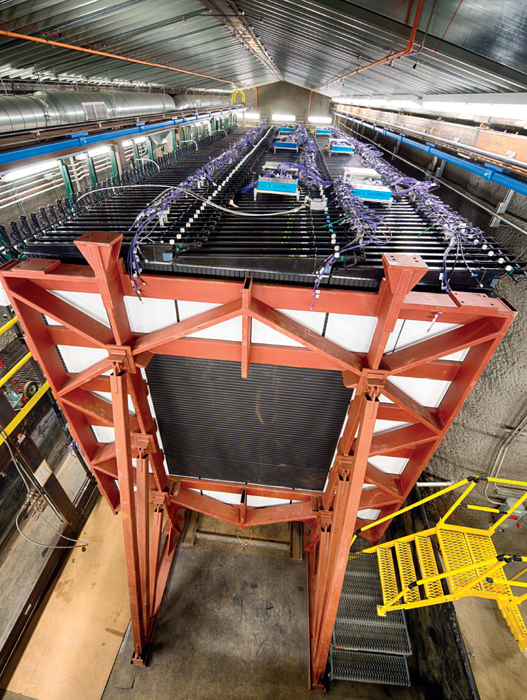Context:
Recently, scientists presented the most recent findings from the NOvA cooperation Experiments at a conference in Italy.
About the NOvA Experiment facility:
- NOvA, which stands for NuMI Off-axis νe Appearance, is a scientific initiative managed by the Fermi National Accelerator Laboratory under the U.S. Department of Energy.
- This experiment involves generating a beam of neutrinos at Fermilab’s facility near Chicago, USA, and directing it over 800 Km to a large detector located in Ash River, Minnesota, USA.
- The detector captures neutrinos and their antimatter counterparts, antineutrinos. It allows scientists to observe how these particles transform into different types during their journey.
- This phenomenon, known as neutrino oscillation, is crucial for understanding the fundamental properties of neutrinos, including their mass ordering.
Aims of NOvA:
- NOvA aims to determine the influence of neutrinos on the universe’s evolution by exploring which type of neutrino has the highest and lowest masses.
- NOvA aims to increase the understanding of the specific ordering of neutrino masses. This could provide answers to numerous unresolved questions in physics.
Key findings:
- Scientists said the NOvA collaboration had acquired twice as much data as it had during NOvA’s previous run, four years ago. The new results complemented the previous ones with greater precision.
- This precision in mass differences indicates a preference for neutrinos following the normal mass ordering, although scientists have not yet reached the definitive threshold needed to confirm this as a discovery.
Basics of Neutrinos:
- Neutrinos are subatomic particles with no electric charge and possess a small mass. They rank as the second-most abundant particles after photons (particles of light) and are the most prevalent among particles constituting matter.
- Neutrinos are challenging to detect because they rarely interact with other particles. They are also known as “Ghost Particles.”
- Neutrinos undergo oscillation, where a neutrino initially born as one type (electron, muon, or tau neutrino) transforms into other types as it travels. Eg: – electron neutrinos emitted by the Sun change into muon and tau neutrinos by the time they reach Earth.
- Neutrinos are primarily produced when leptons interact with matter. They can originate from natural sources (such as cosmological neutrinos from the Big Bang) and man-made sources (like reactor neutrinos produced during fission).
Why the push towards Neutrino research?
- Neutrinos, capable of traversing most matter without interaction, thus holds the potential for long-distance information transmission.
- Fully understanding neutrinos could lead to their practical use in communication channels, possibly replacing electromagnetic waves in the future.
- The Standard Model of particle physics doesn’t predict massive neutrinos. Incorporating them into the Standard Model will require far-reaching changes that physicists are still working out.
Mass ordering of neutrinos:
- Physicists understand that neutrinos exist in three types with varying masses, but they have not determined the absolute mass or identified the heaviest neutrino yet.
- Theoretical models propose following two potential arrangements of neutrino masses: –
- In the normal ordering, two neutrinos have lighter masses, and one has a heavier mass.
- In the inverted ordering, one neutrino has a lighter mass, and two have heavier masses.
Indian and Global initiatives:
- Several international experiments in the field include: – Super-K III in Japan, SNO+ in Canada, MiniBOONE, MicroBOONE, and NOνA in the U.S., Double CHOOZ in France, Jiangmen Underground Neutrino Observatory in China, OPERA in Switzerland, and IceCube in Antarctica.
- India’s India-based Neutrino Observatory, funded by the Department of Atomic Energy, was planned for Theni (Tamil Nadu) but faces uncertainty due to procedural issues and insufficient political backing.

